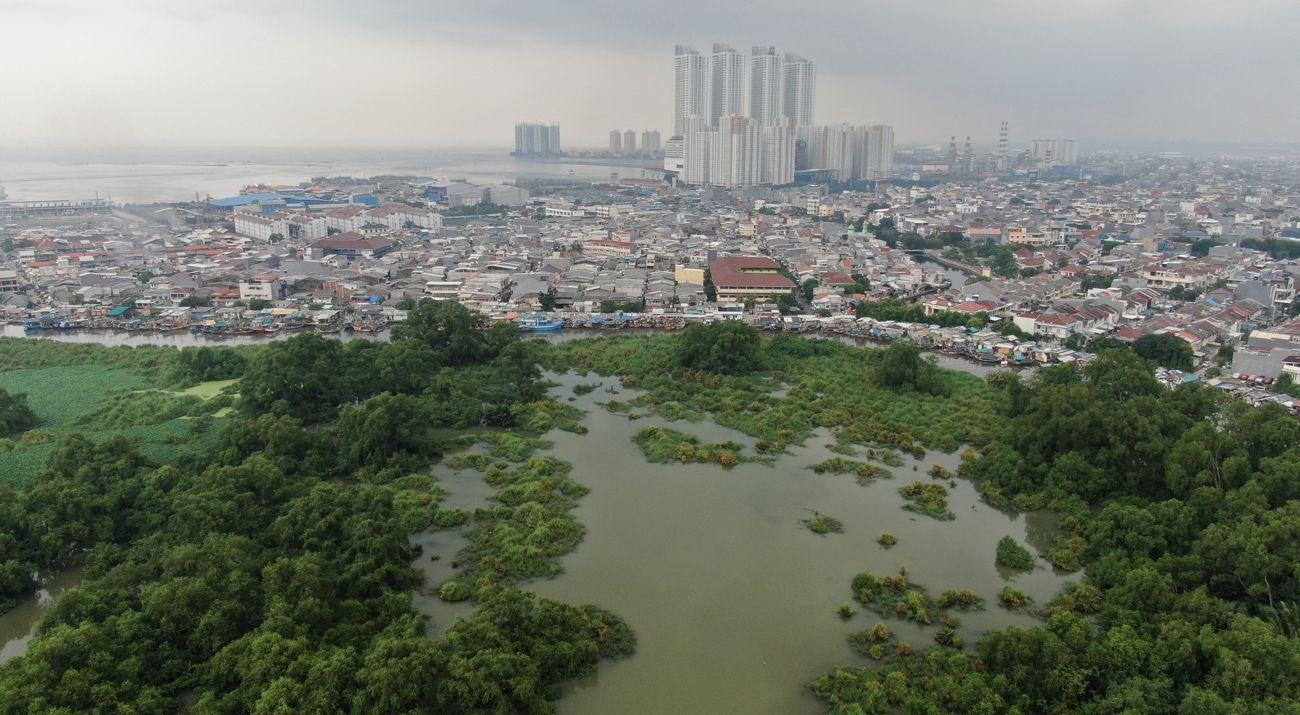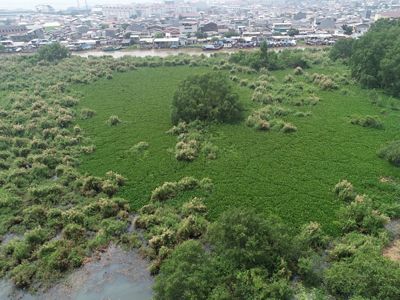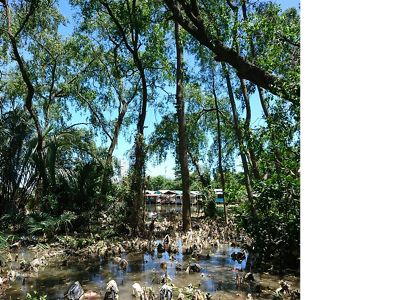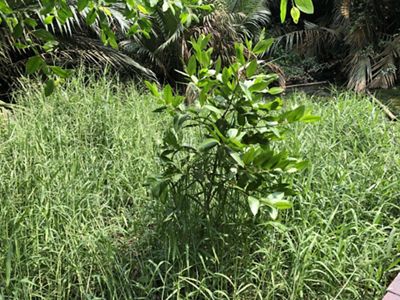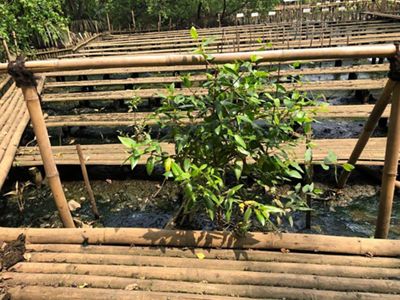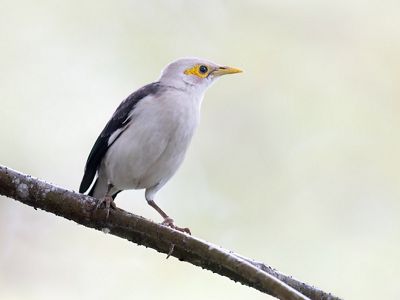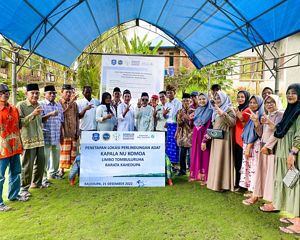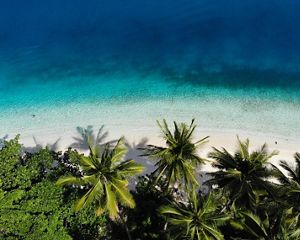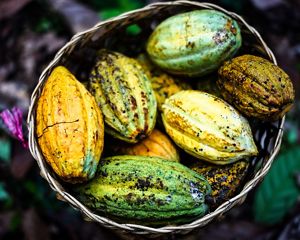Essential Notes on Mangrove Ecosystem Restoration in the Muara Angke Wildlife Sanctuary, 2018 - 2023 Period
The Muara Angke Wildlife Sanctuary, a unique conservation area, is the most compact wildlife sanctuary in Indonesia, spanning an area of 25.02 hectares. This sanctuary, a mangrove ecosystem with a mangrove forest cover of 12.3 hectares, is nestled at the tip of one of the world's most densely populated cities, Jakarta. Its unique location and features make it a subject of significant environmental pressure, such as solid waste overflows from the Angke River and low water salinity due to surrounding developments and land subsidence. These unique challenges require innovative and adaptive solutions, which the restoration efforts are striving to provide.
Read: Muara Siran, Home of the Deep Peatland which Continues to Grow
Despite the daunting challenges, Muara Angke Wildlife Sanctuary stands as a beacon of hope. It's not just an area but a crucial ecosystem that supports Jakarta's remaining biodiversity and acts as a vital flood control measure. Designated as a wildlife sanctuary in 1998, this area is a mandated habitat for water birds and long-tailed macaques. BirdLife International has also recognized the sanctuary as an important bird area for protected bird species, underscoring its unique role in conservation. The Muara Angke Wildlife Sanctuary is a testament to the resilience and adaptability of nature, and its preservation is of utmost importance.
The pressures mentioned above have decreased the ability of several mangrove species in SM Muara Angke to regenerate naturally. Low water salinity causes invasive plants to dominate the area. Coupled with scattered garbage covering the surface, there is even less opportunity for mangrove seeds/propagules to grow.
These impacts have a domino effect. Of the 14 mangrove species that once existed in SM Muara Angke, only nine species remained by 2018. The decline in species also affects its fauna. Between 1982 and 1996, there were 95 bird species in this sanctuary, but between 2019 and 2023, only 72 species were recorded. This decline in bird species clearly indicates the deteriorating health of the ecosystem and the urgent need for restoration.
In 2018, the Jakarta Natural Resources Conservation Center (BKSDA) and Yayasan Konservasi Alam Nusantara (YKAN) joined forces through the Mangrove Ecosystem Restoration Alliance (MERA) program. This collaborative effort, supported by key players in mangrove preservation such as APP Sinarmas, Indofood, Chevron Pacific Indonesia, and Djarum, is dedicated to restoring the ecosystem of SM Muara Angke over five years (2018-2023). The MERA program is crucial in coordinating and implementing the various restoration strategies, ensuring they are effective and sustainable.
The restoration approach in this area is more comprehensive than mangrove planting. It involves a comprehensive Nature-Based Solutions restoration approach aimed at enhancing ecosystem functions to facilitate the natural growth and regeneration of the mangrove forests. The MERA program has implemented various environmental improvement strategies, including the installation of trash barriers (203 m) to prevent solid waste from entering the area, control of invasive plant species (1.37 ha) by clearing surfaces covered by invasive plants, and the construction of water canals (82.54 m) to control flooding or waterlogging within the area. These efforts have already started showing promising results in restoring SM Muara Angke.
-
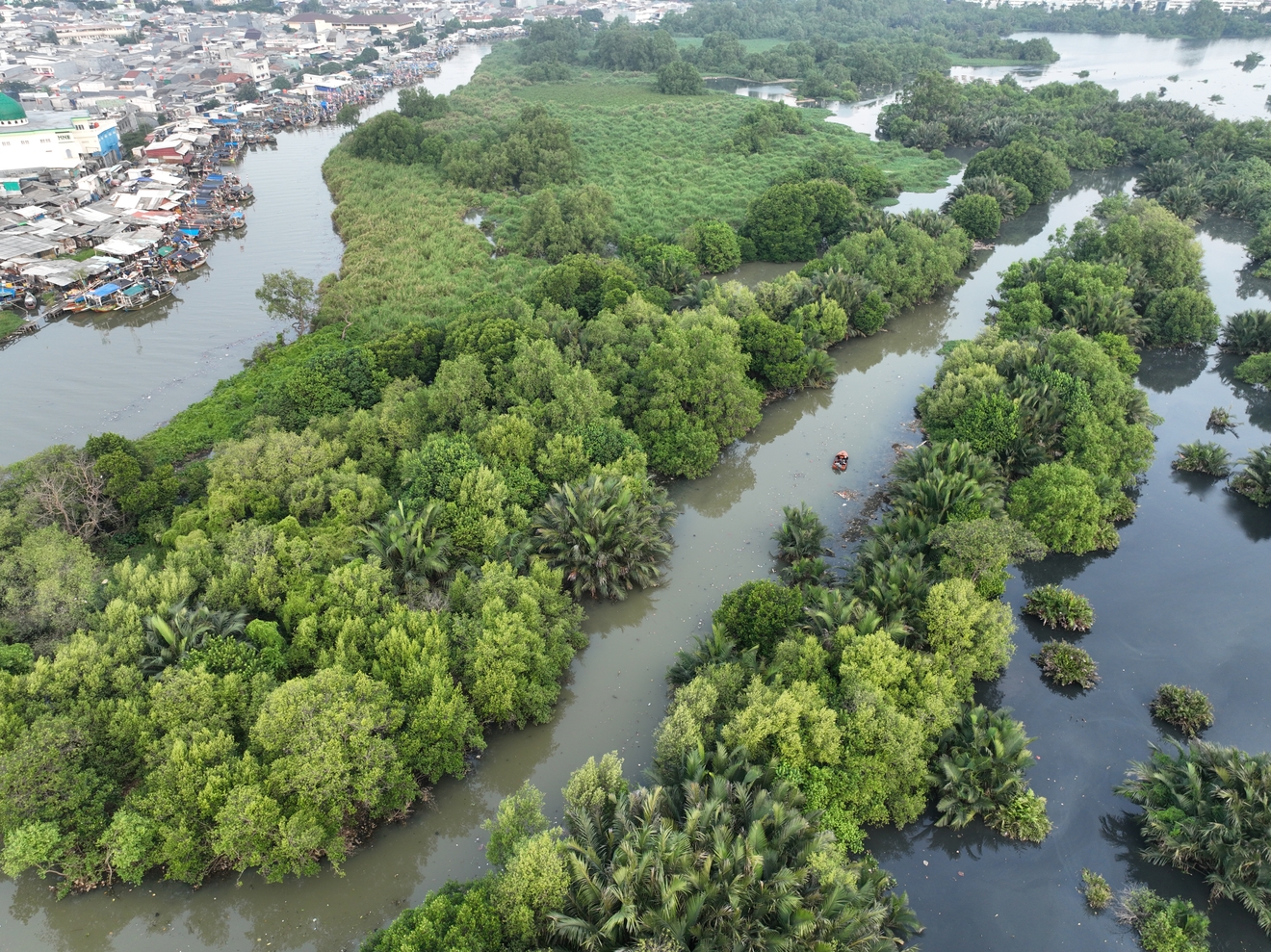
Hydrological improvement (5,995 m2)
Opening access for seawater circulation into the area. The aim is to increase water salinity. Water with high salt content can control invasive plants while encouraging mangroves to grow to their maximum potential.
-
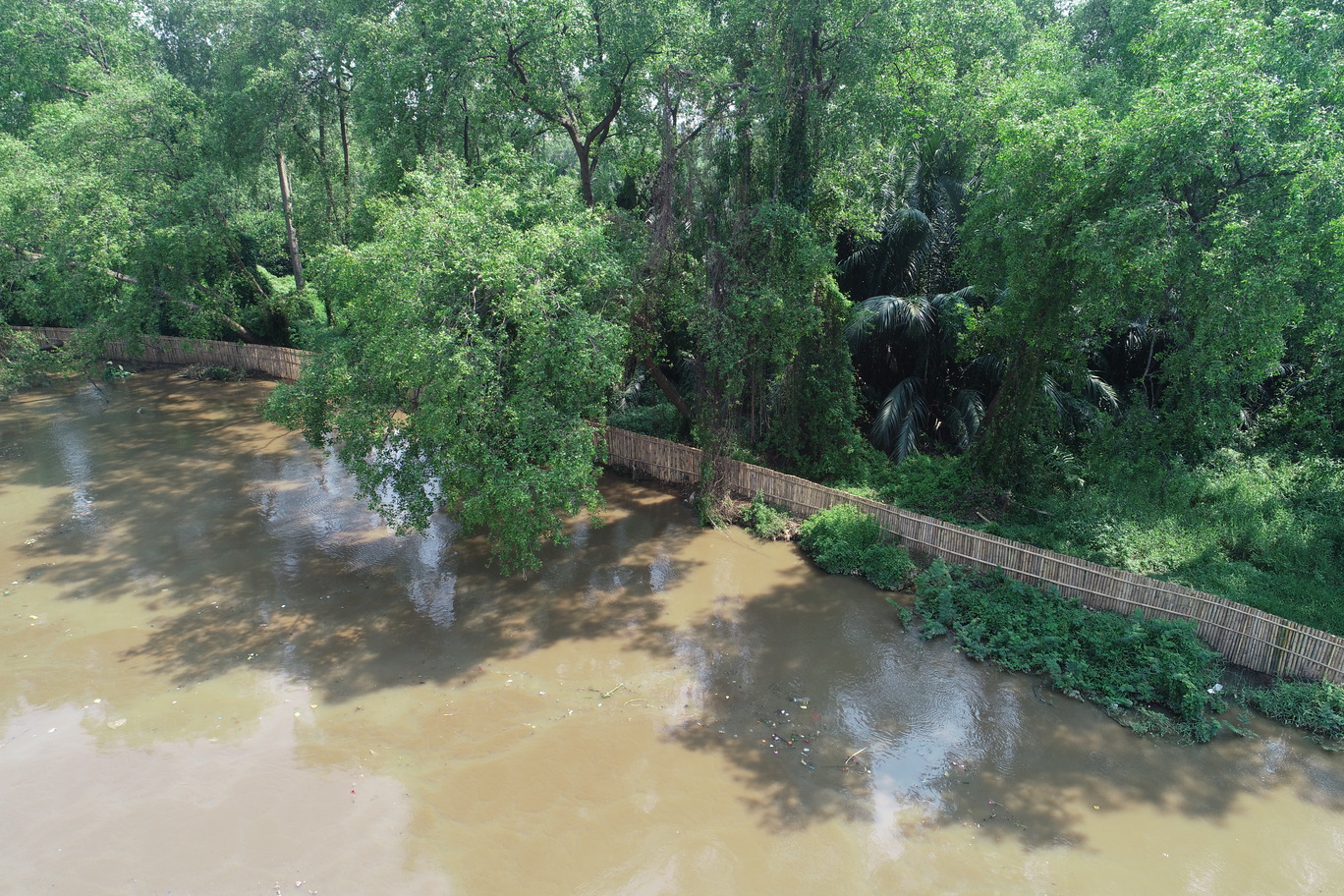
Installation of trash barriers (203 m)
Prevents solid waste from entering the area.
-
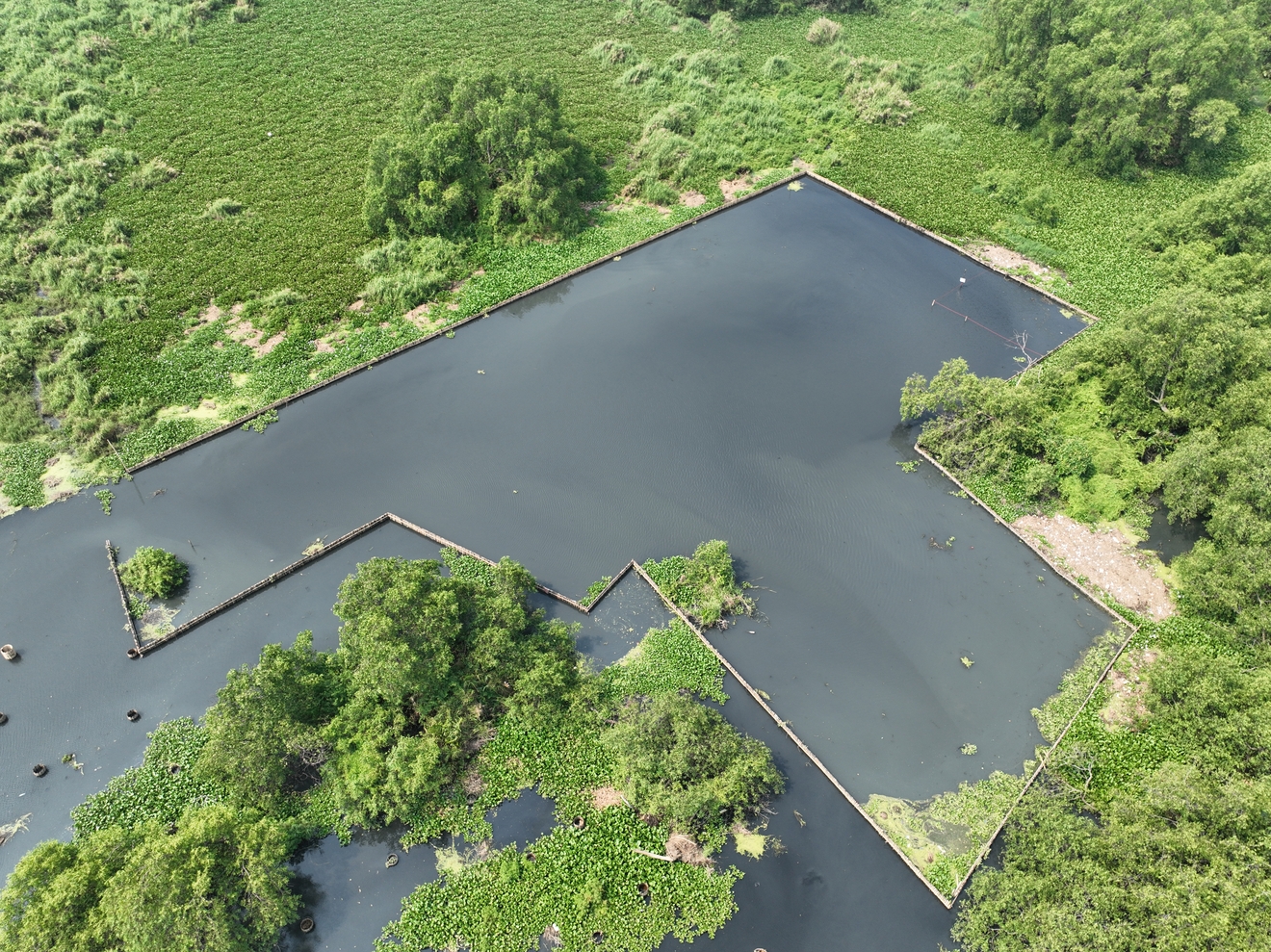
Control of invasive plant species (1.37 ha)
Clearing surfaces covered by invasive plants gives mangrove seeds/propagules a chance to grow.
-
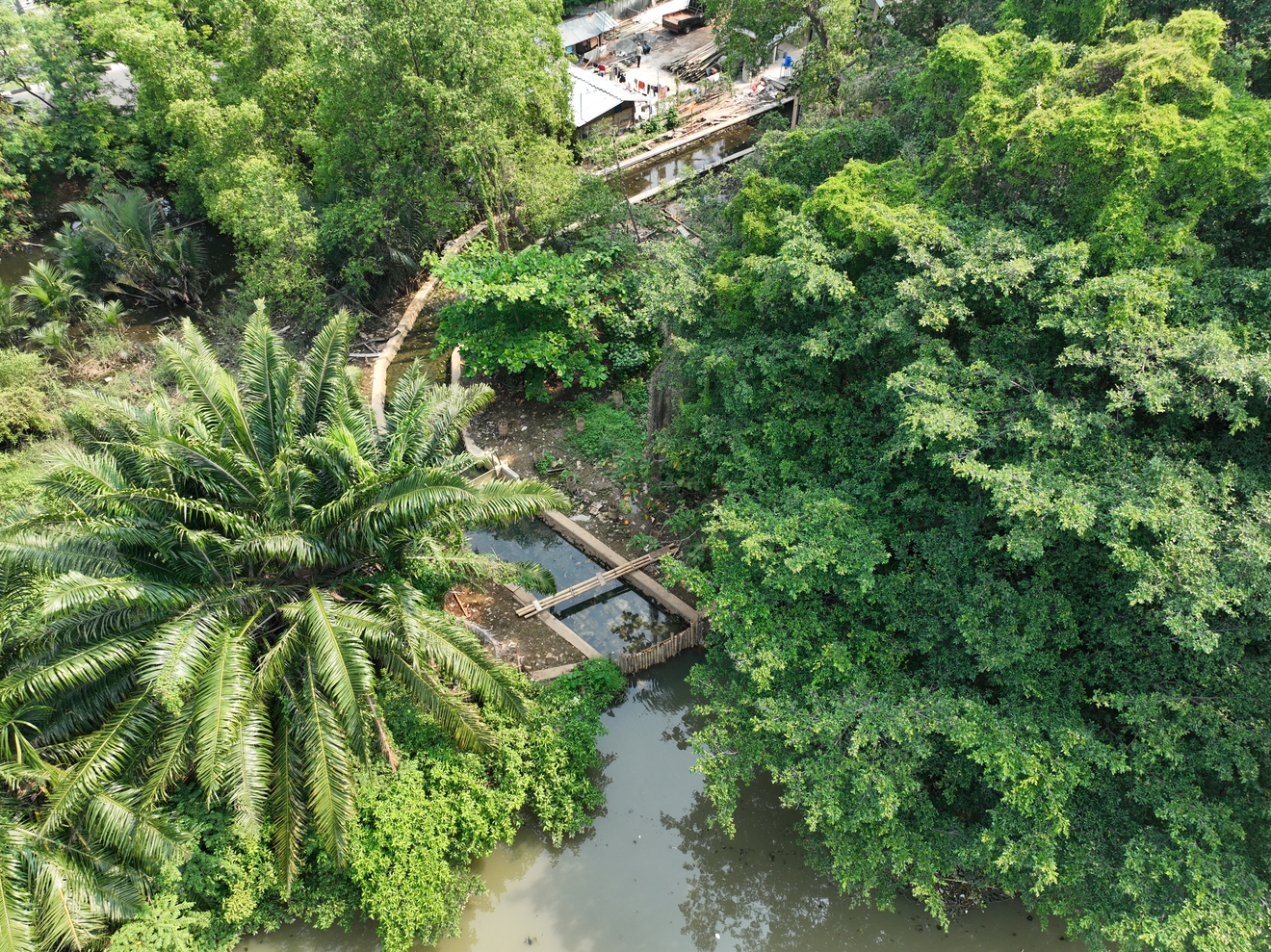
Construction of water canals (82.54 m)
Controls flooding or waterlogging within the area.
The various strategies mentioned have resulted in significant environmental improvements. Four indicators noted by BKSDA Jakarta as short-term successes of this restoration activity are:
1. Natural Regeneration of Sonneratia caseolaris (Pidada)
| July 2021 | July 2022 |
|---|---|
| 0/ha | 78 - 149/ha |
*Based on BKSDA Jakarta's notes, before the MERA Program started, this species had not been naturally regenerated for the last decade. Additionally, this species is one of the most challenging mangrove species to propagate.
*Besides S. caseolaris, another species that has started to regenerate naturally is Excoecaria agallocha, (however, data on the seedling rate have yet to be collected as this is occurring outside the monitoring plots).
2. Increased water salinity
| 2001 | 2015 | August 2023 | November 2023 |
|---|---|---|---|
| 1,67 ppt | 0,38 ppt | 12 ppt | 15 ppt |
*Based on Jakarta BKSDA records in the last two decades, salinity in November 2023 will be the highest.
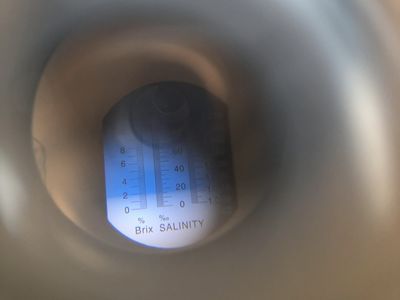
3. The volume of solid waste has decreased by 85.5%
| Before Restoration | Pasca Restoration |
|---|---|
| 75,8 item/m2 | 11 item/m2 |
4. The increase in bird and herpetofauna species
| Number of Bird Species in Muara Angke SM | ||
|---|---|---|
| Before Restoration | During Restoration | Pasca Restorasi |
| 53 | 57 | 60 |
| Number of Herpetofauna Species in Muara Angke SM | |
|---|---|
| Before Restoration | Pasca Restoration |
| 10 | 16 |
*Still requires long-term study


